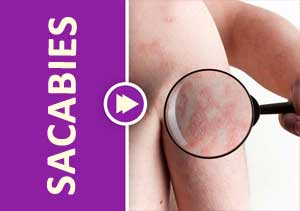- Home
- Editorial
- News
- Practice Guidelines
- Anesthesiology Guidelines
- Cancer Guidelines
- Cardiac Sciences Guidelines
- Critical Care Guidelines
- Dentistry Guidelines
- Dermatology Guidelines
- Diabetes and Endo Guidelines
- Diagnostics Guidelines
- ENT Guidelines
- Featured Practice Guidelines
- Gastroenterology Guidelines
- Geriatrics Guidelines
- Medicine Guidelines
- Nephrology Guidelines
- Neurosciences Guidelines
- Obs and Gynae Guidelines
- Ophthalmology Guidelines
- Orthopaedics Guidelines
- Paediatrics Guidelines
- Psychiatry Guidelines
- Pulmonology Guidelines
- Radiology Guidelines
- Surgery Guidelines
- Urology Guidelines
EDF Guideline on the Management of Scabies

Scabies is an infectious disease caused by infestation with the parasite Sarcoptes scabieivar. hominis. The infestation occurs by skin-to-skin contact including sexual contact or, lesscommonly, by contact with infested fomites (e.g. clothing and towels). S. scabiei mites burrow into human epidermis in which the female parasite lays eggs that hatch and develop into adults in 2 weeks.
Patients’ main complaint is nocturnal itch. Disseminated, excoriated, erythematous papules are usually seen on the anterior trunk and limbs. Crusted scabies occurs in immuno-compromised hosts and may be associated with reduced or absentpruritus.
Major Recommendations :
- Recommended treatments are permethrin 5% cream, oral ivermectin and benzyl benzoate 25% lotion.
- Alternative treatments are malathion 0.5% aqueous lotion, ivermectin1% lotion and sulfur 6-33% cream, ointment or lotion.
- Crusted scabies therapy requires a topical scabicide and oral ivermectin.
- Topical treatment should be applied to all skin regions including scalp, groin, navel, external genitalia, finger and toe web spaces and the skin beneath the ends of the nails at night and left in place for 8-12 hours. The skin should be cool and dry.
- A second application is recommended after 7-14 days. After applying treatment patients should change into clean clothing. All the patient’s close personal contacts should be treated simultaneously to avoid re-infestation.
- Clothing, bedding, towels and other items should be machine washed (at 50o C or higher), dry-cleaned, or sealed and stored in plastic bag for one week.
- Mass treatment of large populations with endemic disease can be performed with a single dose of ivermectin (200 micrograms/kg of body weight).
- Partner management needs a look-back period of two months. Screening for other STI is recommended.
- Patients and close contacts should avoid sexual contact until completion of treatment and should strictly observe personal hygiene rules when living in crowded spaces.
Next Story
NO DATA FOUND

Disclaimer: This site is primarily intended for healthcare professionals. Any content/information on this website does not replace the advice of medical and/or health professionals and should not be construed as medical/diagnostic advice/endorsement or prescription. Use of this site is subject to our terms of use, privacy policy, advertisement policy. © 2020 Minerva Medical Treatment Pvt Ltd